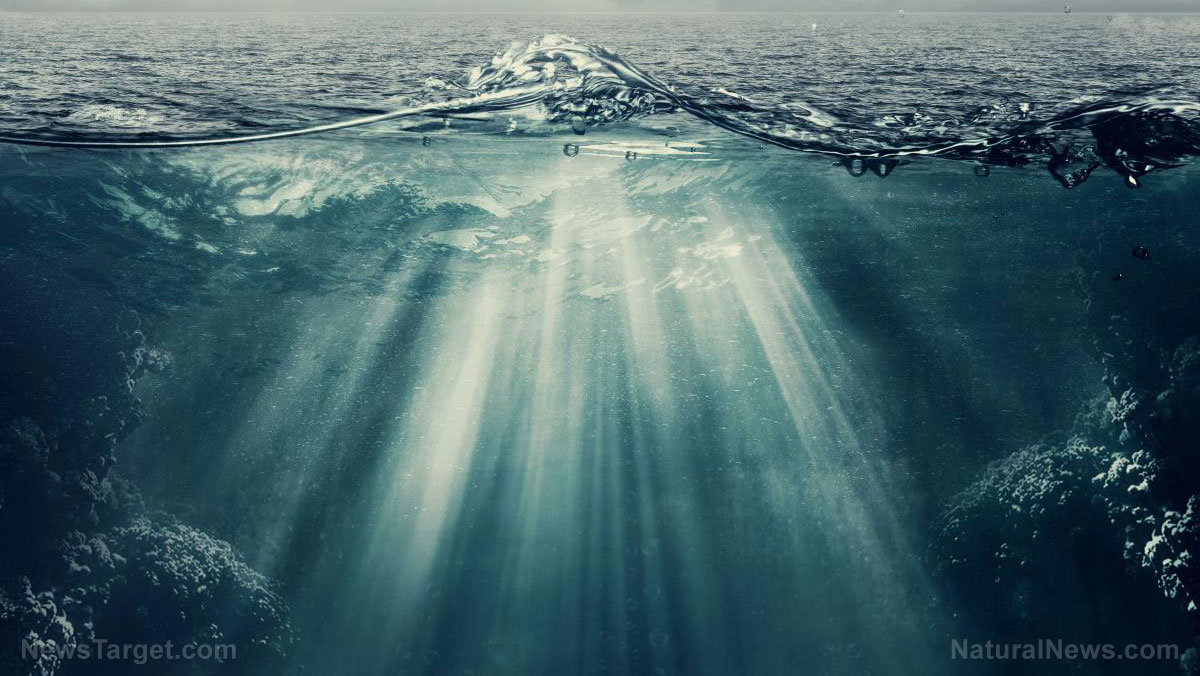Massive two-day underwater avalanche sprawls more than 600 miles across the Atlantic Ocean floor
By virgiliomarin // 2021-07-06
Tweet
Share
Copy

A massive underwater avalanche off the coast of West Africa has spread more than 600 miles across the seafloor of the Atlantic Ocean. This is according to an international team of researchers, who detected the colossal two-day event in the Congo Canyon, a deep submarine canyon near the mouth of the Congo River.
The underwater avalanche is scientifically called a turbidity current, or the rapid, downhill flow of sediment-laden water. A turbidity current rushes downslope like an avalanche and can increase in speed and size as it flows. It forms when mud and sand on the continental shelf are loosened by earthquakes, collapsing slopes or other geological disturbances.
The turbidity current that occurred off the West African coast took place starting January 14 last year, but the researchers finished analyzing sensor data only recently. The team detected the current after the long lines anchoring some of the oceanographic moorings in the region snapped.
"We had a series of oceanographic moorings that were hit by the event, which broke them from their seafloor anchors so that they popped up to send us an email," said Peter Talling, a professor of geography and earth science at Durham University in the U.K., who led the study.
The current spread around 683 miles after rolling across the seafloor for two consecutive days. It became increasingly faster as it flowed, accelerating from speeds of 16 feet per second to 26 feet per second.
"This thing gradually got faster and faster. Because it erodes the seabed as it goes, it picks up sand and mud, which makes the flow denser and even quicker. So it has this positive feedback where it can build and build and build," Talling explained.
The current formed due to a heavy flood in the Congo River a month before the event, as well as some unusually large spring tides two weeks after the flooding. The flood delivered sand and mud to the head of the Congo Canyon, then the tides set the current in motion.
Talling said that this was the longest runout turbidity current that was monitored in action so far. It was also the only monitored turbidity current to continuously self-accelerate for several hundreds of miles. (Related: Underwater geology: Scientists have discovered that ocean currents create avalanches, rivers and other seafloor infrastructure changes.)
The researchers detailed their findings in a paper, which was posted on the pre-print website Earth ArXiv.
Do turbidity currents pose any threats?
Turbidity currents are not as destructive as other natural disasters, such as earthquakes and tsunamis. But they can still cause damage since they can break submarine cables used in telecommunications. These cables are very important for everyday life because they collectively transport 99 percent of all transoceanic data, including internet usage, phone calls and text messages. The route that they offer is also eight times faster than what satellites provide. If these cables get destroyed, communications in several regions can get interrupted. For instance, the January 2020 turbidity current destroyed two cables that carried data traffic to West Africa, causing internet connection in several parts of the region to slow down. The cables were repaired within a few weeks, but there had been additional breaks since the repair because huge lumps of sediments kept tumbling downslope. For the researchers, last year's event underscores the importance of conducting more research into large turbidity currents in the region. "It is important to understand how such powerful and very long runout turbidity currents are triggered, especially for hazards to strategic seabed cables, including cable routes that are planned for 2020-21 off West Africa," the researchers said. Disaster.news has more on turbidity currents and other natural disasters. Sources include: DailyMail.co.uk Newsweek.com BBC.comTweet
Share
Copy
Tagged Under:
environment research natural disaster flood oceans atlantic ocean geology West Africa turbidity currents seabed submarine cables underwater avalanche oceanographic moorings
You Might Also Like
Studies prove that vitamin D works against the coronavirus
By Ramon Tomey // Share
By Arsenio Toledo // Share
Maine becomes first state to enact broad ban of toxic PFAS “forever chemicals”
By Cassie B. // Share
Biblical flooding devastates mainland China
By Ethan Huff // Share
Recent News
Iran conducts surprise missile drills amid rising tensions with Israel
By kevinhughes // Share
Kremlin denies reports of plans to "restore Soviet influence"
By bellecarter // Share
How AI news bots are quietly reshaping public opinion
By avagrace // Share
The Unshackled Physician: A surgeon's awakening to medical tyranny
By ramontomeydw // Share











